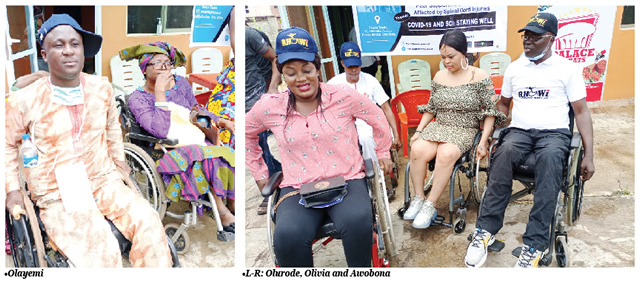Bedsores: A Hidden Struggle for Spinal Cord Injury Survivors
Understanding Bedsores: An Unseen Battle for Spinal Cord Injury Survivors
Spinal cord injuries (SCI) can dramatically change lives, reshaping the everyday realities that survivors face. Among these challenges, the issue of bedsores—also known as pressure sores or decubitus ulcers—can turn into a painful, and often debilitating, struggle. But what exactly are bedsores, and why do they pose such a significant concern for those living with spinal cord injuries? Let’s dive into the material to uncover the hidden struggles faced by many.
What Are Bedsores?
Bedsores develop when there is prolonged pressure on the skin, usually over bony areas like the heels, elbows, or buttocks. Think of them as the body’s way of shouting out, “Hey, I’m not getting enough blood flow!” When blood cannot reach the skin, it leads to cell death and, eventually, an open wound. Bedsores can be painful and are often difficult to treat—imagine them as little nuisances that turn into big problems if not managed properly.
The Connection Between Spinal Cord Injuries and Bedsores
After a spinal cord injury, mobility often becomes limited, making it challenging for individuals to reposition themselves frequently. This immobility increases the risk of developing bedsores dramatically.
Why Are Bedsores So Common in SCI Survivors?
- Limited Mobility: Without the ability to shift positions naturally, pressure builds on certain areas, leading to sore spots.
- Lack of Sensation: Severe spinal cord injuries may impair feeling, meaning that an individual may not realize when they’re resting on a pressure point for too long.
- Compromised Skin Integrity: SCI survivors may already have fragile skin due to medical conditions and medications, making them more susceptible to skin breakdown.
Recognizing the Warning Signs
Identifying bedsores early can make a world of difference in recovery. Here are some signs to look for:
- Redness: The first indication that something is wrong usually shows up as a red patch on the skin that doesn’t fade when you press on it.
- Breaks in the Skin: This can escalate quickly from redness to an open sore.
- Swelling or Warmth: The area around the sore may feel warm to the touch and appear swollen.
- Foul Odor: If there’s an infection, an unpleasant smell may accompany the sore.
Understanding these warning signs can empower SCI survivors and their caregivers, allowing them to take proactive steps against bedsores.
Prevention is Better Than Cure
When it comes to bedsores, prevention without a doubt beats treatment. Here are some effective strategies to keep those pesky sores at bay:
Regular Turning and Positioning
Creating a schedule for turning or repositioning every two hours is essential. This practice alleviates pressure and allows blood to flow freely.
Use Supportive Surfaces
Invest in special mattresses or cushions designed for pressure relief. These items distribute weight evenly and reduce pressure on vulnerable areas.
Maintain Skin Hygiene
Keeping the skin clean and dry is paramount. This might seem like common sense, but moisture can lead to infections and make skin breakdown more likely. Bathing regularly and using talcum powder in moisture-prone areas can be helpful.
Balanced Nutrition
Good nutrition fuels the body’s healing process. Foods rich in vitamins and minerals, particularly Vitamin C and protein, can help support skin health and cell repair.
Treating Bedsores
Even with diligent preventive measures, sometimes bedsores will occur. Here’s how to treat them effectively:
Stage Evaluation
Bedsores are categorized into four stages, based on severity:
- Stage 1: Skin is intact but shows redness.
- Stage 2: The skin breaks open and may form a blister.
- Stage 3: The sore extends into deeper tissues, showing fat.
- Stage 4: The wound is deep, potentially exposing muscle or bone.
Understanding the stage of the bedsore is critical for determining treatment.
Consulting Medical Professionals
Most importantly, when dealing with bedsores, do not hesitate to consult with healthcare providers. They can assess the wound and recommend various forms of treatment, including specialized dressings, infections management strategies, and surgical options if necessary.
At-Home Care Strategies
If the pressure sore is not severe, managing it at home can be possible:
- Clean the Wound: Gently wash the sore with saline or mild soap and water.
- Apply Dressings: Use hydrocolloid or foam dressings designed for pressure ulcers.
- Monitor Changes: Keep an eye on the sore for signs of infection, such as increasing redness, swelling, or discharge.
Living with Bedsores: The Emotional Toll
The physical pain associated with bedsores is just one side of the story. The emotional burden can be equally heavy for spinal cord injury survivors.
- Mental Health Issues: The ongoing struggle with bedsores can lead to stress, anxiety, and depression. It’s disheartening to face ongoing challenges when you’re working hard to gain independence.
- Social Isolation: Fears of pain and embarrassment from visible sores can lead some individuals to withdraw from social interactions, which can compound feelings of loneliness.
Empowering SCI Survivors
For spinal cord injury survivors, awareness and understanding of bedsores can be liberating. Knowledge is power, and by managing care proactively, they can reclaim their independence and overall well-being.
- Support Systems: Engaging family, friends, and support groups can create a network of encouragement and emotional support.
- Education: Learning about bedsores and their management can help survivors feel more in control of their health.
Conclusion
Bedsores may be a hidden aspect of the spinal cord injury experience, but they don’t have to be an unavoidable part of life. Understanding their causes, recognizing the signs, employing preventative measures, and seeking timely treatment can help vanquish these pesky wounds from the lives of those affected. Navigating life with a spinal cord injury is challenging enough without adding the burden of bedsores, so let’s empower ourselves and each other through education, vigilance, and care.
FAQs
1. How can I tell if a bedsore is infected?
Look for increased redness, swelling, warmth, or pus-like drainage. If you notice any of these signs, seek medical advice promptly.
2. How often should someone with a spinal cord injury change positions?
Ideally, individuals should change positions every two hours to prevent pressure buildup.
3. Are there specific types of cushions or mattresses recommended for prevention?
Yes, look for pressure-relieving products like gel cushions, air mattresses, or memory foam options designed specifically for preventing bedsores.
4. Can bedsores heal on their own?
While mild bedsores might heal with proper care, more severe ulcers often require professional treatment to heal effectively.
5. What nutritional changes can help prevent bedsores?
Focus on a balanced diet rich in protein, vitamins C and E, and zinc to support skin health and repair.







